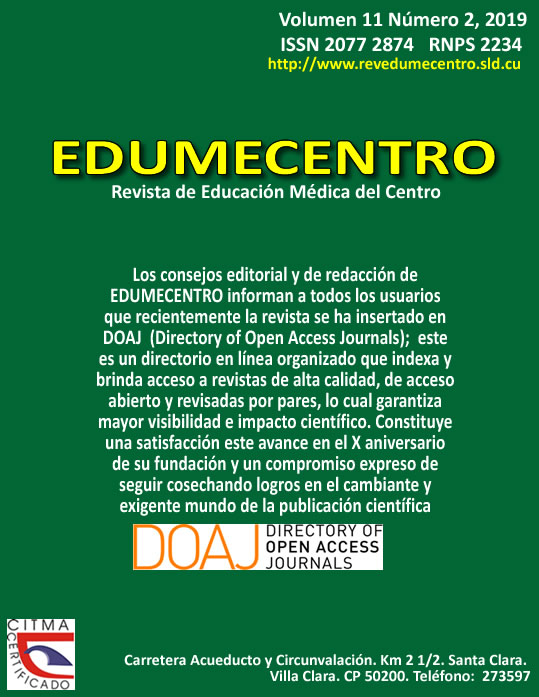Easy incidences and excellent discrimination in an examination on Human Anatomy: is that possible?
Keywords:
educational evaluation, programs, medical education, Medicine studentsAbstract
Background: evaluation is an essential element in the educational process, so its quality is essential in the current conditions of mass.Objective: to analyze the quality of short response items of Human Anatomy in the ordinary examination of Nervous, Endocrine and Reproductive System in the University of Medical Sciences of Matanzas, course 2016-2017.
Methods: an evaluation study was carried out in the field of the teaching-learning process, within the framework of medical education. Theoretical, empirical methods and statistical processing were applied. We analyzed 513 ordinary exams in their levels of difficulty and discrimination in the sections of Human Anatomy.
Results: the most relevant were the following: in question 1 the difficulty of the subparagraphs ranged from highly to moderately easy, although the discrimination turned out to be good, since few students were wrong, but they turned out to be suspended in the exam, which was worth in the excellent discrimination of highly easy incidents. In the 2 the difficulty was average, with incidents moderately easy and difficult and its level of discrimination turned out to be excellent. Items c and d showed an unusual but very good combination of difficulty and excellent discrimination. In questions 4, 5 and 7 good results were obtained, but subsection 7.5 presented an unfavorable relationship for the evaluation, with poor discrimination of a highly easy clause.
Conclusions: the applied test presented a balanced and adequate difficulty to the required standards and a mostly qualified discrimination of excellent.
Downloads
Download data is not yet available.
Published
2019-04-01
How to Cite
1.
Bahr Ulloa S, Guisado Zamora K, Tápanes Acosta M, García Correa D, Marrero Mesa AM. Easy incidences and excellent discrimination in an examination on Human Anatomy: is that possible?. EDUMEC [Internet]. 2019 Apr. 1 [cited 2025 Oct. 31];11(2):98-116. Available from: https://revedumecentro.sld.cu/index.php/edumc/article/view/1182
Issue
Section
ARTÍCULO ORIGINAL
License
Los autores que publican en esta revista están de acuerdo con los siguientes términos:- Los autores/as conservarán sus derechos de autor y ceden a la revista el derecho de primera publicación de su obra, el cuál estará simultáneamente sujeto a una Licencia Creative Commons Reconocimiento-NoComercial-CompartirIgual 4.0 Internacional (CC BY-NC-SA 4.0) que permite a terceros compartir la obra siempre que se indique su autor y su primera publicación esta revista.
- Los autores pueden establecer por separado acuerdos adicionales para la distribución no exclusiva de la versión de la obra publicada en la revista (por ejemplo, situarlo en un repositorio institucional o publicarlo en un libro), con un reconocimiento de su publicación inicial en esta revista.
- Se permite y se anima a los autores a difundir sus trabajos electrónicamente (por ejemplo, en repositorios institucionales o en su propio sitio web) antes y durante el proceso de envío, ya que puede dar lugar a intercambios productivos, así como a una citación más temprana y mayor de los trabajos publicados (Véase The Effect of Open Access) (en inglés).










